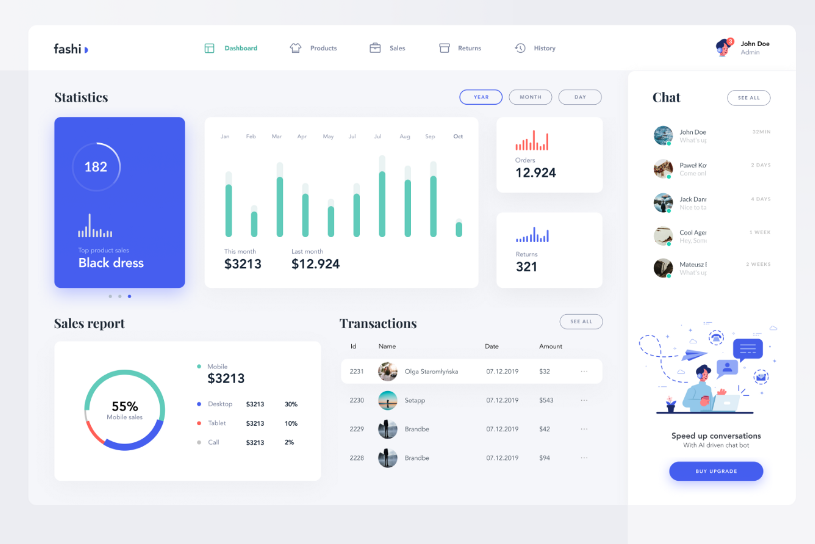In today’s digital landscape efficient app performance is crucial for user satisfaction and business success. Enter the Core App Dashboard a powerful tool that streamlines app management enhances user experience and provides valuable insights. In this article, we’ll delve into what the Core App Dashboard is its features, and how to optimize your app’s performance using this essential platform. Recognizing the importance of their work we need to embark on a journey to discover the mysteries and potential of center application dashboards.
What Is the Core App Dashboard?
At the core of each application lies its dashboard likened to a compass directing clients through the computerized territory. A very well-created dashboard optimizes your app performance instinct and usefulness offering clients a consistent pathway to investigate different elements and functionalities.
The Core App Dashboard serves as a central hub bringing together critical app functionalities and data. Here’s what you need to know:
Purpose:
The dashboard aims to improve the user experience by simplifying access to essential information and management tasks.
Features:
- User Management: Easily create and manage user accounts assign permissions and define roles within the app.
- Data Insights: Access detailed statistics and patterns helping you make informed decisions.
- Task Organization: Efficiently create organize and track tasks within the app.
- Alerts and Notifications: Stay informed about important updates and events.
Collaboration:
The Core App Dashboard fosters collaboration among team members including developers quality assurance and product managers all working together to optimize app performance.
Optimizing App Performance with Core App Dashboard
To ensure your app delivers a top-notch experience follow these steps:
Monitor Key Metrics:
- Identify crucial performance indicators such as app load times response rates crash rates user engagement and retention.
- Regularly track these metrics using the Core App Dashboard.
Enhance User Experience:
- Design an intuitive user interface.
- Prioritize user-centric features and smooth navigation.
Make Informed Decisions:
- Leverage insights from the dashboard to refine app functionality.
- Adapt based on user behavior and trends.
Let’s Walk Through an Example of How to Use the Core App Dashboard Effectively:
Suppose you’re developing a mobile app for a fitness community. Your goal is to enhance user retention by identifying pain points and optimizing the app experience. Here’s how the Core App Dashboard can help:
User Metrics Overview:
- Log in to the Core App Dashboard.
- Navigate to the “Metrics” section.
- Observe key metrics like daily active users (DAU) user engagement and churn rate.
- Identify trends and anomalies.
User Behavior Analysis:
- Go to the “User Behavior” tab.
- Use filters to segment users (e.g. new users and returning users).
Retention Funnel:
- Create a retention funnel:
- Define stages (e.g. sign up complete first workout share achievements).
- Monitor conversion rates between stages.
- Identify where users abandon the funnel.
Push Notifications:
- In the “Notifications” section schedule personalized push notifications:
- Remind users to log workouts.
- Celebrate milestones (e.g. 10 workouts completed).
- Encourage social sharing.
A/B Testing:
- Experiment with variations:
- Test different UI layouts.
- Try gamification elements (badges challenges).
- Measure impact on retention.
Feedback Loop:
- Integrate user feedback:
- Monitor app reviews.
- Use sentiment analysis to gauge satisfaction.
- Address pain points promptly.
Remember the Core App Dashboard isn’t just about data it’s about actionable insights. By leveraging these features you’ll fine-tune your app retain users and create a thriving fitness community.
Unlocking Efficiency: The Core App Dashboard
1. Consistent Mix: Bridging Networks Across Stages
In the intricate web of modern systems achieving a harmonious blend is essential. Enter the Core App Dashboard acting as the central hub that seamlessly connects across various platforms and devices. By integrating APIs and ensuring cross-platform compatibility users gain uninterrupted access to their critical tasks transcending the limitations of reality.
2. Personalization Worldview: Tailoring Experiences
In the realm of client interactions, a one-size-fits-all approach falls short. The Core App Dashboard embraces a personalized worldview adapting touchpoints to individual preferences and behaviors. Guided by user-centric design principles and powered by AI algorithms these dashboards evolve addressing ever-changing user needs and inclinations.
3. Empowering Clients of All Backgrounds
At the heart of client-centricity lies comprehensive inclusivity. Core application dashboards prioritize accessibility ensuring that users of all ages and abilities can navigate and engage effortlessly. From screen reader compatibility to contrast adjustments every design element is crafted with inclusivity in mind empowering users to fully participate in the digital experience.
4. Safeguarding Client Data and Privacy
In an era fraught with digital threats security stands as the bedrock of trust. The Core App Dashboard acts as a fortress diligently protecting client data and privacy. Through encryption protocols and multi-factor authentication, these dashboards fortify defenses against potential breaches instilling confidence and peace of mind among users.
Conclusion:
In the dynamic world of app development, the Core App Dashboard stands as a vital ally. By optimizing performance understanding user behavior and fostering collaboration you’ll propel your app to new heights. Those points redefine the boundaries of customer engagement and utility seamlessly blending elegant design data-driven insights and persuasive copywriting. As we navigate the digital landscape let’s harness the revolutionary potential of these dashboards inviting users on transformative journeys marked by transparency efficiency and resilience.






